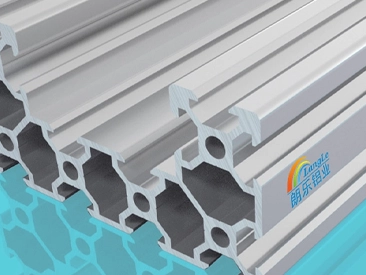
Introduction
Extruded aluminum is ubiquitous in various industries due to its versatility, strength-to-weight ratio, and excellent corrosion resistance. However, a common question that arises among engineers and manufacturers is whether extruded aluminum can be effectively welded. Understanding the welding capabilities of extruded aluminum is crucial for applications that require intricate designs and robust structural integrity. This article delves into the complexities of welding extruded aluminum, exploring the metallurgical principles, welding techniques, and factors affecting weld quality. By examining theoretical insights and practical considerations, we aim to provide a comprehensive understanding of this subject. For more information on the properties and applications of extruded aluminum, one can refer to Aluminum Extrusion.
Understanding Extruded Aluminum
Extruded aluminum is produced by forcing aluminum alloy material through a die with a specific cross-sectional profile. The process aligns the material's grain structure, enhancing its mechanical properties. The most commonly used aluminum alloys for extrusion are from the 6xxx series, particularly 6061 and 6063, due to their excellent formability and strength characteristics. The extrusion process results in profiles that are integral to applications in construction, automotive, aerospace, and consumer goods.
Material Properties Affecting Weldability
The weldability of extruded aluminum is influenced by its chemical composition and thermal properties. Aluminum alloys have high thermal conductivity and a low melting point compared to steel, which affects heat distribution during welding. Additionally, aluminum forms a refractory oxide layer that can hinder welding if not properly managed. Understanding these material properties is essential for selecting appropriate welding techniques and parameters.
Welding Techniques for Extruded Aluminum
Several welding processes are suitable for extruded aluminum, each with its advantages and limitations. The choice of technique depends on factors such as material thickness, joint design, and required mechanical properties.
Gas Tungsten Arc Welding (GTAW/TIG)
GTAW, commonly known as TIG welding, is widely used for aluminum due to its ability to produce high-quality, precise welds. The non-consumable tungsten electrode provides an arc that melts the workpiece and filler metal. An inert gas, typically argon, shields the weld area from atmospheric contamination. TIG welding is suitable for thin to medium sections of extruded aluminum and allows for excellent control over the weld pool.
Gas Metal Arc Welding (GMAW/MIG)
GMAW, or MIG welding, uses a consumable wire electrode and is suitable for welding thicker sections of aluminum. The continuous wire feed allows for higher welding speeds, making it efficient for large-scale production. Pulse welding techniques within GMAW can help manage heat input and reduce defects such as porosity.
Friction Stir Welding (FSW)
FSW is a solid-state welding process where a rotating tool generates frictional heat to plastically deform and join the materials. This technique is particularly advantageous for welding extruded aluminum as it eliminates issues related to melting, such as solidification cracking and porosity. FSW produces welds with superior mechanical properties and is effective for joining large panels and complex profiles.
Challenges in Welding Extruded Aluminum
Welding extruded aluminum presents several challenges that must be addressed to achieve high-quality joints.
Oxide Layer Removal
Aluminum naturally forms a thin oxide layer on its surface, which has a higher melting point than the base metal. This layer can impede proper fusion if not removed. Mechanical cleaning (wire brushing) and chemical cleaning (using solvents) are common methods to eliminate the oxide layer before welding.
Porosity Prevention
Hydrogen absorption can lead to porosity in aluminum welds. Sources of hydrogen include moisture in the atmosphere, contaminants on the material surface, and improper shielding gas mixtures. Using high-purity inert gases and ensuring material cleanliness are critical steps in preventing porosity.
Thermal Distortion Control
Aluminum's high thermal expansion coefficient can result in distortion during welding. Controlling heat input through appropriate welding parameters, fixturing, and welding sequences helps mitigate distortion. Techniques such as intermittent welding and backstepping can also be employed.
Metallurgical Considerations
The welding process can affect the metallurgical properties of extruded aluminum, particularly the heat-affected zone (HAZ).
Heat-Affected Zone Softening
In precipitation-hardened aluminum alloys, welding can reduce mechanical strength in the HAZ due to overaging or dissolution of strengthening precipitates. Post-weld heat treatments may be necessary to restore mechanical properties, although they can be impractical for large structures.
Alloy Selection and Filler Metals
Selecting compatible filler metals is crucial to prevent issues like hot cracking. For instance, 5xxx series fillers are often used when welding 6xxx series extrusions to provide good strength and ductility. Understanding the alloy's welding characteristics helps in choosing the appropriate filler material.
Best Practices for Welding Extruded Aluminum
Adhering to best practices enhances weld quality and structural integrity.
Preparation and Fit-Up
Proper joint design and tight fit-up minimize gaps that can lead to weld defects. Cleaning the joint area thoroughly removes contaminants that may cause porosity or inclusions.
Welding Parameters Optimization
Adjusting welding parameters such as current, voltage, travel speed, and gas flow rate is essential. Using pulse welding techniques can help control heat input and reduce spatter.
Use of Advanced Welding Technologies
Embracing advanced welding technologies like laser welding and hybrid welding processes can offer benefits. These technologies provide precise control over the welding process, resulting in higher quality welds with minimal distortion.
Case Studies and Applications
Real-world applications demonstrate the practical aspects of welding extruded aluminum.
Aerospace Industry
In aerospace applications, where weight reduction is critical, welded extruded aluminum components are used in fuselage structures and wing assemblies. Friction stir welding has been instrumental in fabricating large panels with high structural integrity.
Automotive Sector
The automotive industry utilizes welded extruded aluminum in chassis components and body structures to achieve lightweight designs without compromising safety. Techniques like MIG welding are commonly employed for their efficiency in high-volume production.
Construction and Architecture
Extruded aluminum is prevalent in building facades, window frames, and structural glazing systems. Welding allows for the creation of complex geometries and custom profiles that meet architectural aesthetics and structural requirements.
Quality Assurance and Testing
Ensuring weld quality is paramount, and various testing methods are employed.
Non-Destructive Testing (NDT)
Techniques such as ultrasonic testing, radiography, and dye penetrant inspection detect internal and surface defects without damaging the component. NDT is essential for critical applications where failure is not an option.
Mechanical Testing
Mechanical tests, including tensile, bend, and fatigue tests, assess the weld's strength and performance under load. These tests validate that the welding process meets the required specifications and standards.
Environmental and Safety Considerations
Welding aluminum requires attention to environmental and safety aspects.
Fume Extraction and Ventilation
Welding fumes can contain hazardous substances. Proper ventilation and fume extraction systems protect workers from inhaling harmful particles.
Personal Protective Equipment (PPE)
Welders should use appropriate PPE, including welding helmets with suitable filters, gloves, and protective clothing, to prevent exposure to arc radiation, heat, and spatter.
Advancements in Aluminum Welding Technology
Continuous research leads to innovations that improve aluminum welding processes.
High-Speed Welding Processes
Developments in high-speed welding enable faster production rates without sacrificing quality. Techniques such as high-velocity MIG welding reduce heat input and minimize distortion.
Automation and Robotics
Robotic welding systems provide consistent weld quality and increase productivity. Automation reduces the likelihood of human error and allows for precise control over welding parameters.
Conclusion
Welding extruded aluminum is not only feasible but also integral to leveraging the material's full potential in various industries. Understanding the unique challenges and employing appropriate welding techniques are essential for achieving high-quality, reliable joints. Advancements in technology continue to expand the possibilities of aluminum welding, making it a dynamic and evolving field. Manufacturers and engineers must stay informed about best practices and innovations to optimize their use of extruded aluminum. For those interested in exploring aluminum extrusion solutions, resources on Aluminum Extrusion provide valuable information.
"}









